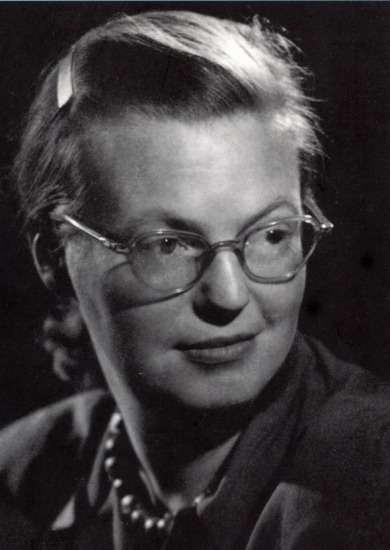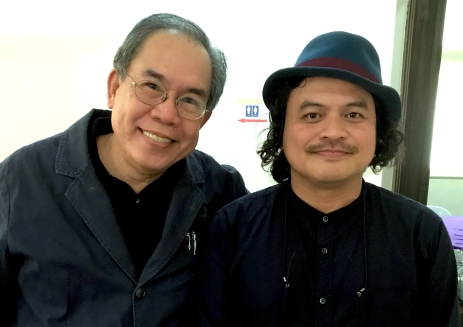
Penman for Monday, March 27, 2017
LAST WEEK, my undergraduate class in Contemporary American Literature took up a short story that has never failed to elicit strong reactions since it was first published in June 1948, soon becoming one of America’s most anthologized stories. When Shirley Jackson’s “The Lottery” came out in The New Yorker, it caused such a firestorm of protest from angry readers that Jackson herself would later write that “Of the three-hundred-odd letters that I received that summer I can count only thirteen that spoke kindly to me, and they were mostly from friends. Even my mother scolded me: ‘Dad and I did not care at all for your story in The New Yorker,’ she wrote sternly; ‘it does seem, dear, that this gloomy kind of story is what all you young people think about these days. Why don’t you write something to cheer people up?’”
If you’re not familiar with the story and would want to read it first before dealing with the spoilers in this piece, I suggest you drop this paper for a few minutes and take a quick look here: http://fullreads.com/literature/the-lottery/. It’s an easy read—Jackson made sure that her story, like her mother suggested, would “cheer people up,” at least at the beginning, which is probably American literature’s most optimistic opening sentence: “The morning of June 27th was clear and sunny, with the fresh warmth of a full-summer day; the flowers were blossoming profusely and the grass was richly green.”
Set in a small farming town on a brilliant summer morning, the story seems to promise nothing but gaiety and frolic. Instead, it turns into a tale of dark horror and human sacrifice, where the townspeople draw lots to choose one of their own to be stoned by the others—including the victim’s own children—to death, in the name of tradition. (As in many primitive societies, these people have been led to believe that sacrifice will bring a good harvest.)
It’s a masterful piece of storytelling, and one that I often turn to for aspects of both craft and insight. In my English 42 American Lit class, we discuss the stories not only for their literary qualities, but also for their historical, political, and cultural significance. Why did the majority of “The Lottery”’s readers in 1948 react so violently against it?
For one thing, because The New Yorker at that time didn’t specifically identify it as a short story, many readers thought it was nonfiction, and couldn’t believe that something so horrible could take place in progressive, postwar America. (South Africa banned the story, leading Jackson to comment that “At least they got it!”) Most readers simply couldn’t take the idea that “good country people” (the title of another important Flannery O’Connor story) could be so stupid and so evil as to communally murder an innocent person for what was perceived to be the common good.
But this was also the age of McCarthyism, of witch-hunts fueled by the anti-Communist hysteria that swept America after the war. Suddenly your neighbor couldn’t be trusted, and too many people were only too willing to give someone else up in defense of “the American way of life.”

My students and I talk about tradition and sacrifice, looking at examples from history, literature, and anthropology—from the animal sacrifice practiced by various tribes to the human sacrifice undertaken in massive numbers by the Aztecs. We discuss the reasons why these practices—some of which might now be deemed inhuman or inhumane—have persisted down the centuries into the present, chiefly the need to placate or propitiate a higher being to gain some reward in return.
Of course we discuss our own Filipino experience, like the ritual killing of pigs and chickens, and even tokhang’s communal aspect. But most notably, nothing brings tradition and sacrifice together for Filipinos more clearly than Holy Week and the figure of the crucified Christ who gives up his life to atone for humankind. Enacted in every Mass, but most vividly in the blaze of summer, Jesus’ sacrifice and our Christian identification with it very likely accounts for our fascination with martyrs such as Jose Rizal and Ninoy Aquino, and with the notion of the hero as sacrificial lamb.
In his study of Philippine literature, the scholar Gerald Burns cites Leon Ma. Guerrero, Rizal’s translator, when he observes in the context of our Roman Catholicism that “Filipinos do not value failure, or for that matter tragedy, for its own sake, but only insofar as these are submerged into the larger end of sacrifice. ‘We reserve our highest homage and deepest love for the Christ-like victims whose mission is to consummate by their tragic “failure” the redemption of our nation.'”
For my undergrads, it’s a lot to digest on a March afternoon, but I can sense that I’ve touched a nerve, especially when I close by asking them, “Should we have to equate heroism and sacrifice with dying? I would hope not. We can live, and not just die, for our country.”
Because of my administrative duties and the fact that I’ll be retiring in two years, this English 42 will likely be the last undergraduate class I will ever teach—a thought that fills me with great sadness and even greater responsibility. And it’s been a wonderful challenge and privilege to use a foreign literature to help my students become better Filipinos.
(For an excellent essay on Shirley Jackson and “The Lottery,” see here: http://www.nybooks.com/articles/2016/10/27/shirley-jackson-in-love-death/)
(Images from shirleyjackson.org and tvline.com)




 Penman for Monday, March 6, 2017
Penman for Monday, March 6, 2017